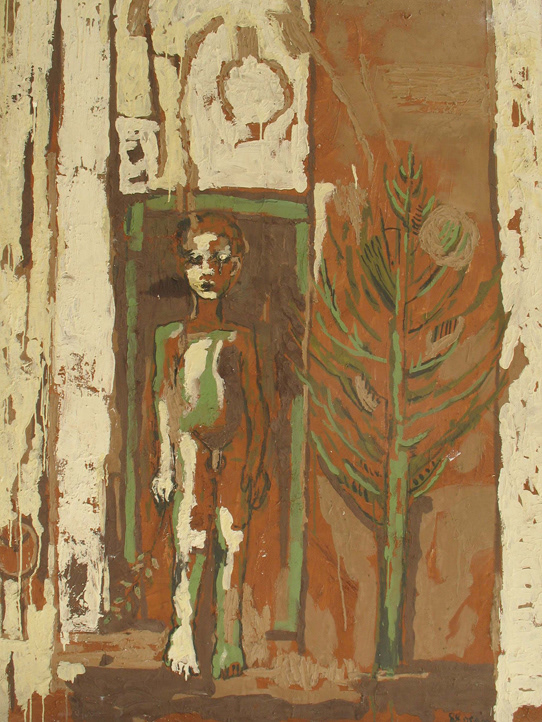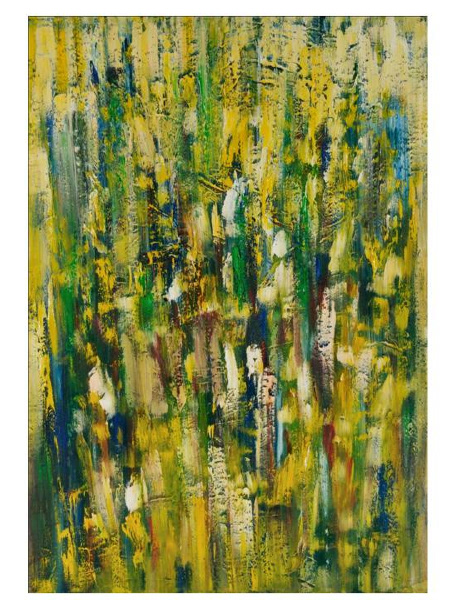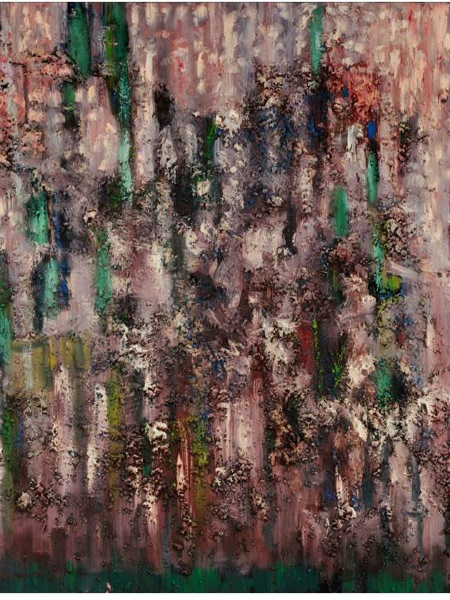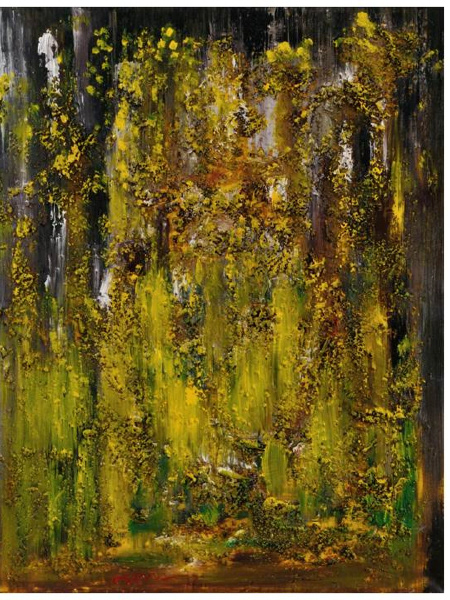Muhammad Yusuf, Features Writer - Zawyeh Gallery at Alserkal Avenue, Dubai, is hosting its first show this year with a solo exhibition by Palestinian artist Osama Said (Jan. 15—Feb. 26).Titled Through The Color Terrain, it presents a series of abstract works where reality is mixed with illusion, depicting fleeting images from the artist’s memory.
The show is part of a process of exploration with colours, textures and light, predominantly using tones of blue, red, purple and yellow.The artist executes his works using unrestrained high intense colours, painting wide areaswith free spontaneous brushwork and generous application of paint, capturing the essence of memory, rather than its details.Said was born in 1957 in the small town of Nahef in Galilee and later moved to Germany.He was influenced by German expressionists and throughout his career as an artist, he hasexplored themes of memory and for geulness, identity and alienation and illusion and reality, especially during his time in Germany for 16 years. Though in a different situation,he imagined home and family and did not stop producing artworks inspired by hishomeland.German expressionism was an early twentieth century German art movement that emphasised the artist’s inner feelings or ideas over replicating reality and wascharacterised by simplified shapes, bright colours and gestural marks or brushstrokes.The German Expressionists were artists, writers, and thinkers who came of age in Germanyprior to World War II, and lived during Wilhelm II’s reign (till 1941).The German Expressionist movement was more than just a style of creating works of art orof telling a story; rather, it was more of a mindset that had social, cultural and political aspects.German Expressionism can be understood as a means of approaching life and, in particular, change. A number of Expressionists shared the“belief that literature was capable of effecting profound changes in society.”
Osama Zaid’s abstract work mixes illusion and reality. Ziad Anani, director of Zawyeh Gallery, emphasises the different dimensions Said brings toPalestinian art with a style that lies between expressionism and abstraction.He notes:“We atempt at presenting Palestinian art across the spectrum, by showing amixture of styles and visions. We aim through our work to reflect the diversity and wealth of existing experiences amongst Palestinian artists throughout different generations.”Said’s works stem from memory: they are a recollection of reminiscences from the past. In his works, one can see or imagine skies, seas or pouring rain, hidden faces and shadows of people, seen here and there.The details in the artworks are hidden and can be spoed sometimes between bold colours and lines or in the far background; a wall or a fence descending downhill and what might be houses or fields or a neighbourhood under the scorching sun.
With wide brushstrokes, the artist embarks on a journey of exploration of colour. Matisse once said:“The chief function of colour should be to serve expression as well as possible.“I put down my tones without a preconceived plan...and perhaps without my having been conscious of it, one tone has particularly seduced or caught me.”Along with this concept, Said also is a crasman of colours. His visual language both informs and departs from reality. Blues dominate his paintings while yellows, fiery reds and purples manifest on his canvases, though not in the same manner. Colours lead him through the canvas to serve expression. In his mind, they have an abstract aesthetic function; bold strokes and unique compositions of light create a special ambience, a kind of passage that can be spoed between the colours and the bold brushstrokes.It is a parallel universe that appears between his fleeting images. Through the striking colours, he creates a sort of cavity or a secret passage that leads to a third concealed dimension or a hidden illusionary world.It is perhaps a world from memory that he presents in a blurred manner. His artworks are enveloped by an intimate atmosphere reflecting light at times, beauty and harmony at others, capturing the movement of faded subjects that appear elusively in the background.
He connects with the nature of his subjects, coming very close to pure abstraction. Said’s journey through the colour terrain is an aesthetic party and an enjoyable visual experience. He was trained in banking before he shied to fine arts and studied at the Bezalel Art Academy in West Jerusalem, before moving to Germany in 1981.He did further studies at the Hochschule der Künste–University of the Arts - in Berlin, where he trained under renowned German-Syrian painter Marwan Kassab Bachi, and graduated with high honors.Upon his return to Palestine from Germany where he had worked as a full time artist, hewas struck by the painful reality of life in the occupied territories.As an artist who lived in exile and as one belonging to the Palestinian minority living within the state of Israel, Said depicts alienation and displacement in his art.While abroad, he painted Palestine from memory and evocative images of pastoral landscapes. He created figurative paintings featuring olive groves as a symbol of resilience and others, showing Mother and Son, in which the mother represents the homeland and caretaker.Later, he produced abstract paintings, ones suspended in time. Houses were reduced by vertical and horizontal brush strokes, and figures appeared hazy, reflecting a decaying temporality and a weakened existence, over which one had no control.The artist re-acts the systematic effort exerted by the Israelis to eradicate the history ofPalestine since the 1948 Nakba. The time-space relationship can be sensed in his depictions, both in the images of emptiness or absence of people from their surroundings.



